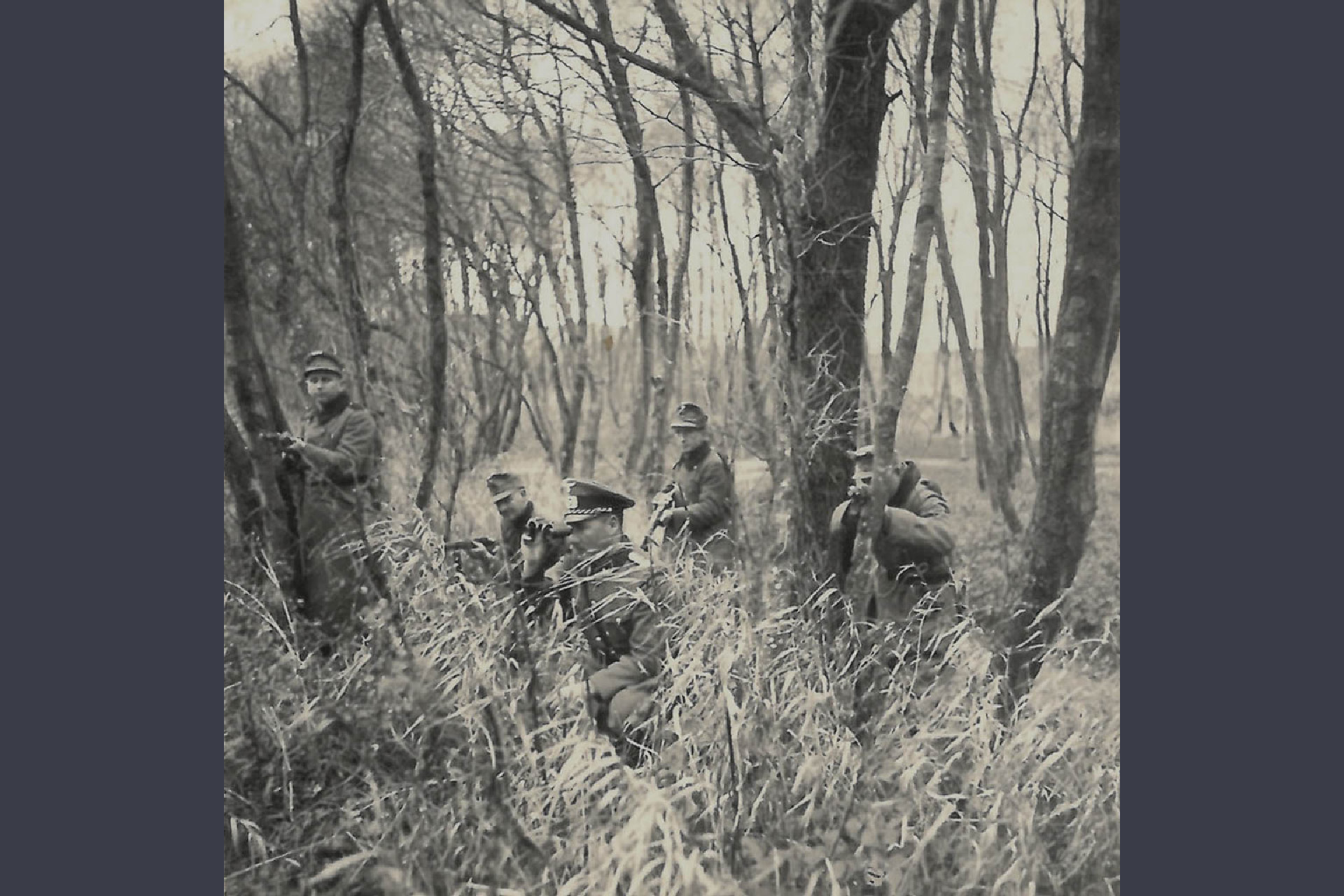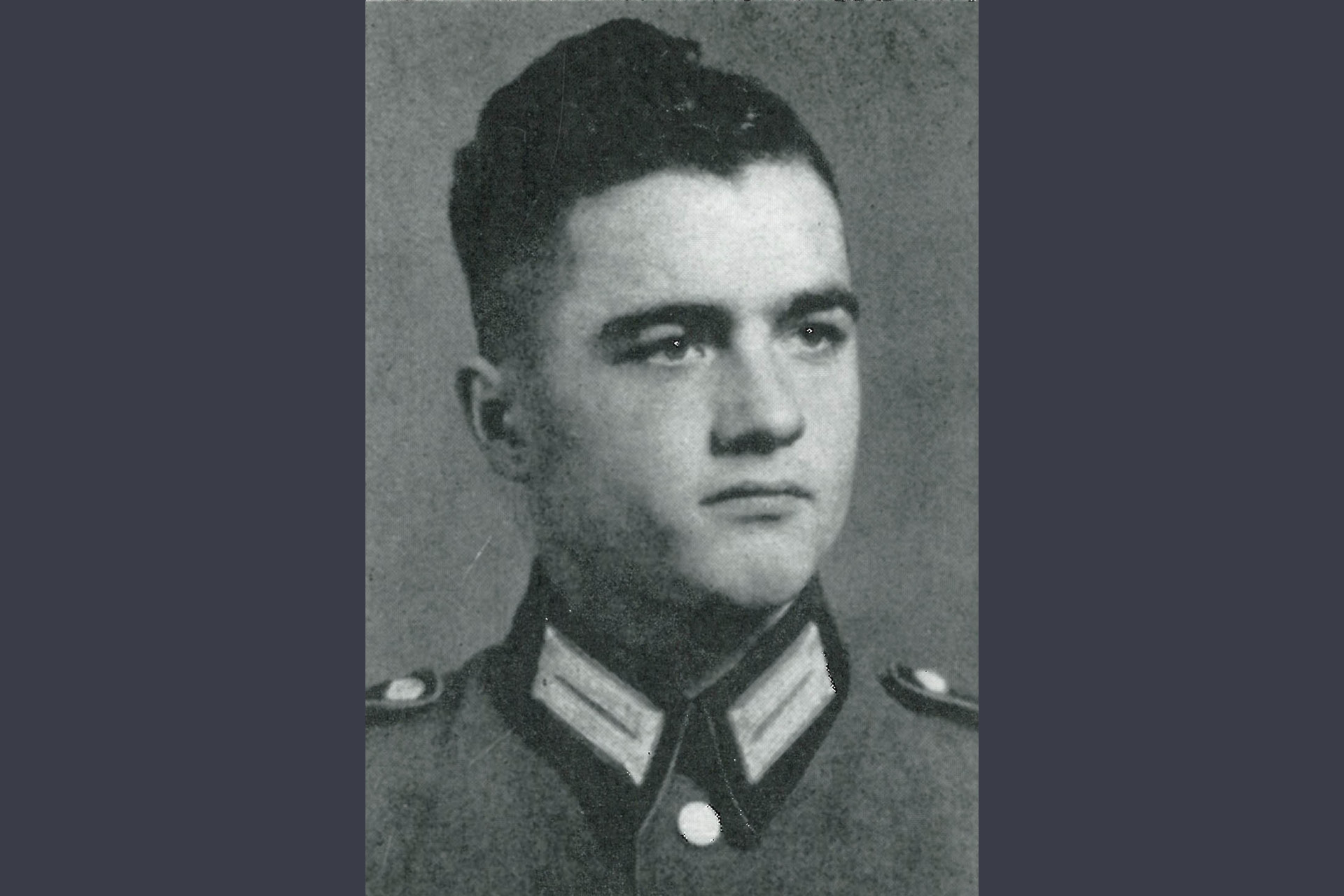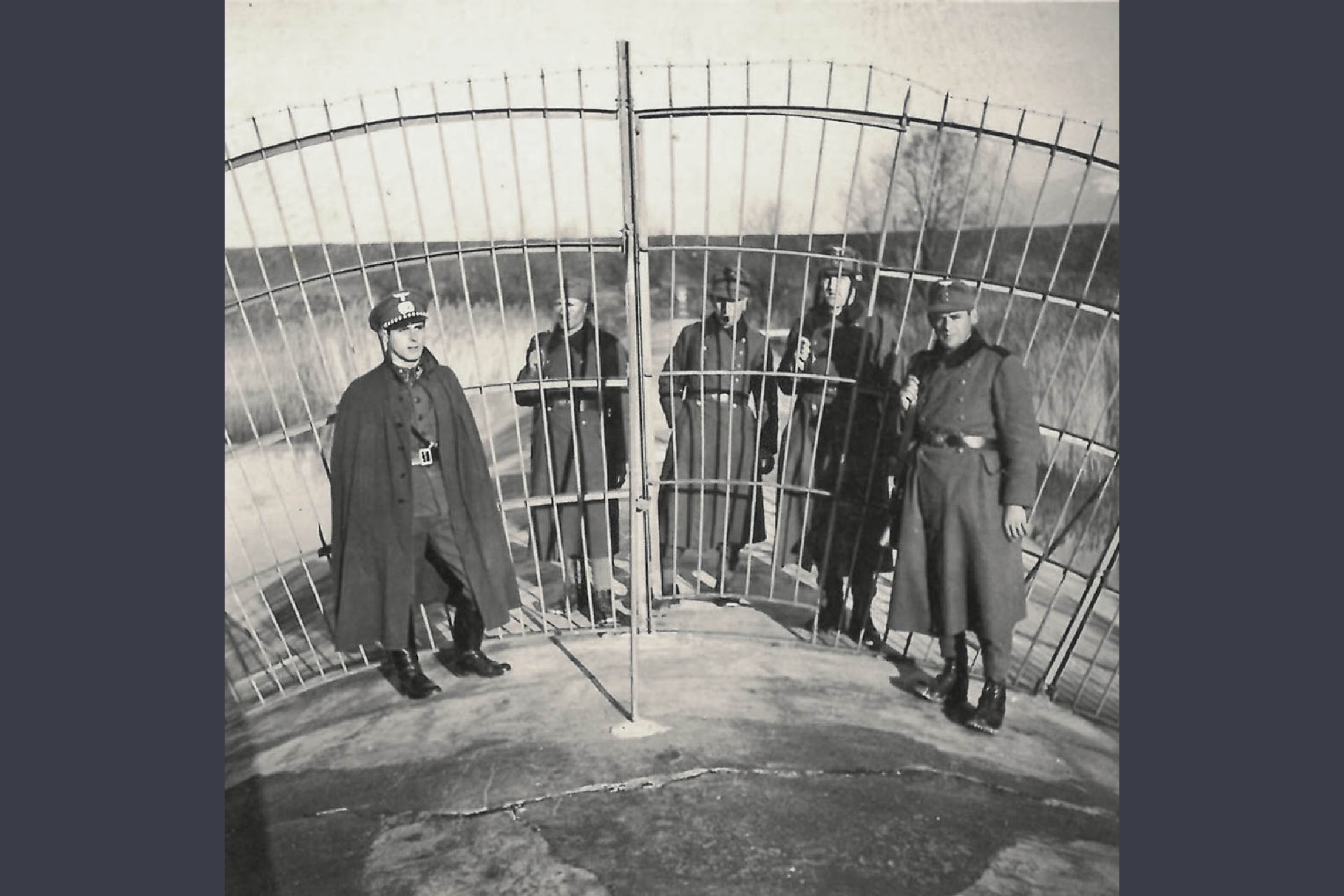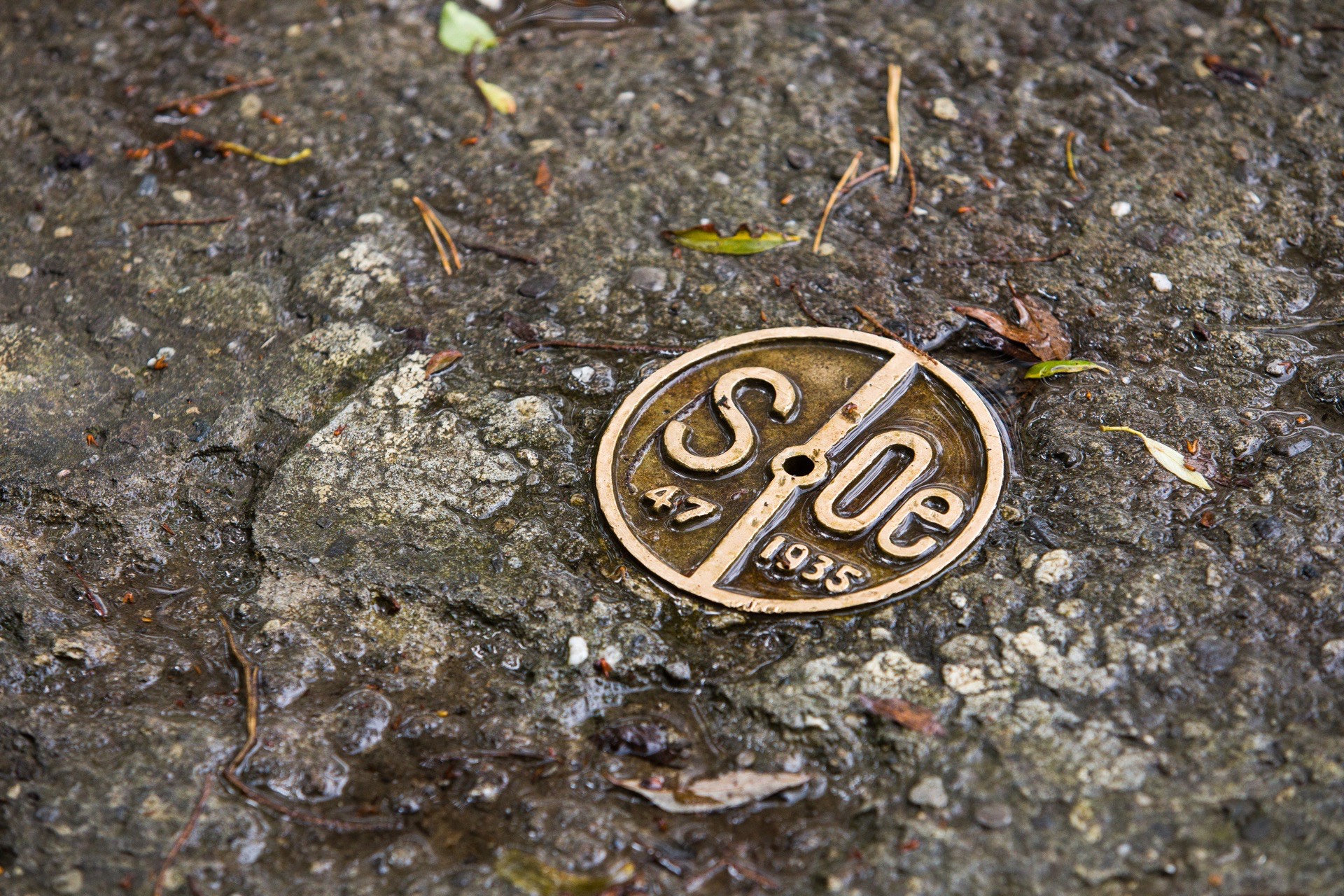Josef Hagen> May 31, 1944
17 Josef Hagen
Shot at the pipe. The Lustenau deserter Josef Hagen
Lustenau, May 31, 1944
On October 10, 1944, three Lustenau citizens are found guilty by the Feldkirch Regional Court of having “offered a soldier who had escaped from military service a helping hand and thereby facilitated the continuation of his escape.” The mother of the fugitive Josef Hagen, Regina Hagen, is sentenced to four months, Hermann Hofer, an uncle of the fugitive, and his acquaintance, Johann König, are sentenced to six and ten months in prison.
Josef Hagen had received home leave in May 1944 and did not want to return to the front after his brother was reported missing in action on May 30. His mother, with the help of Hermann Hofer, convinced someone whom the verdict described as a “shrewd smuggler” to help her son “and show him the best way to cross into Switzerland at the Rohr.”
The “Rohr”, which to this day carries a drainage canal across the Old Rhine, had been used as an escape route before the war began. In the meantime, the crossing on the pipe was blocked with a grid. What remained was the path through the pipe.
“Johann König met with the deserter Josef Hagen and was observed standing with the deserter about 50 meters from the pipe channel and showing him the pipe as an escape route. Josef Hagen was observed climbing into the water towards the pipe channel and disappearing there. The auxiliary customs operations assistant Willibald Hofer, who was the observer of these events, fired 9 shots into the canal opening because he suspected that Josef Hagen was using this canal as an escape route to Switzerland. He also observed Johann König standing on the embankment looking at the pipe channel, which was also his task after Johann König's concession to go near the border to see if the desertion had succeeded.”1
Josef Hagen had not been lucky. Badly wounded by the shots of the auxiliary customs officer, he reached Switzerland. But he died the same day in the hospital in Altstätten. The prison sentences of his relatives and the escape helper were increased even further after the verdict was overturned by the Higher Regional Court in Innsbruck. Johann König's imprisonment was extended to 15 months in the penitentiary. In fact, he sat in a concentration camp until the end of the war.
Links:
A Historical Cycle Route leads to 17 historical sites in Lustenau, from the beginnings of settlement to the present day, including the escape routes along the old Rhine.
https://www.lustenau.at/de/freizeit/kultur/historisches-archiv/historischer-radrundweg
[1] Quoted from: Hanno Platzgummer: “Josef Hagen (1919-1944). Tod auf der Flucht vor dem Tod“, in: Hanno Platzgummer, Karin Bitschnau, Werner Bundschuh (Ed.), „Ich kann einem Staat nicht dienen der schuldig ist …“ Vorarlberger vor den Gerichten der Wehrmacht, Dornbirn 2011, p. 59.
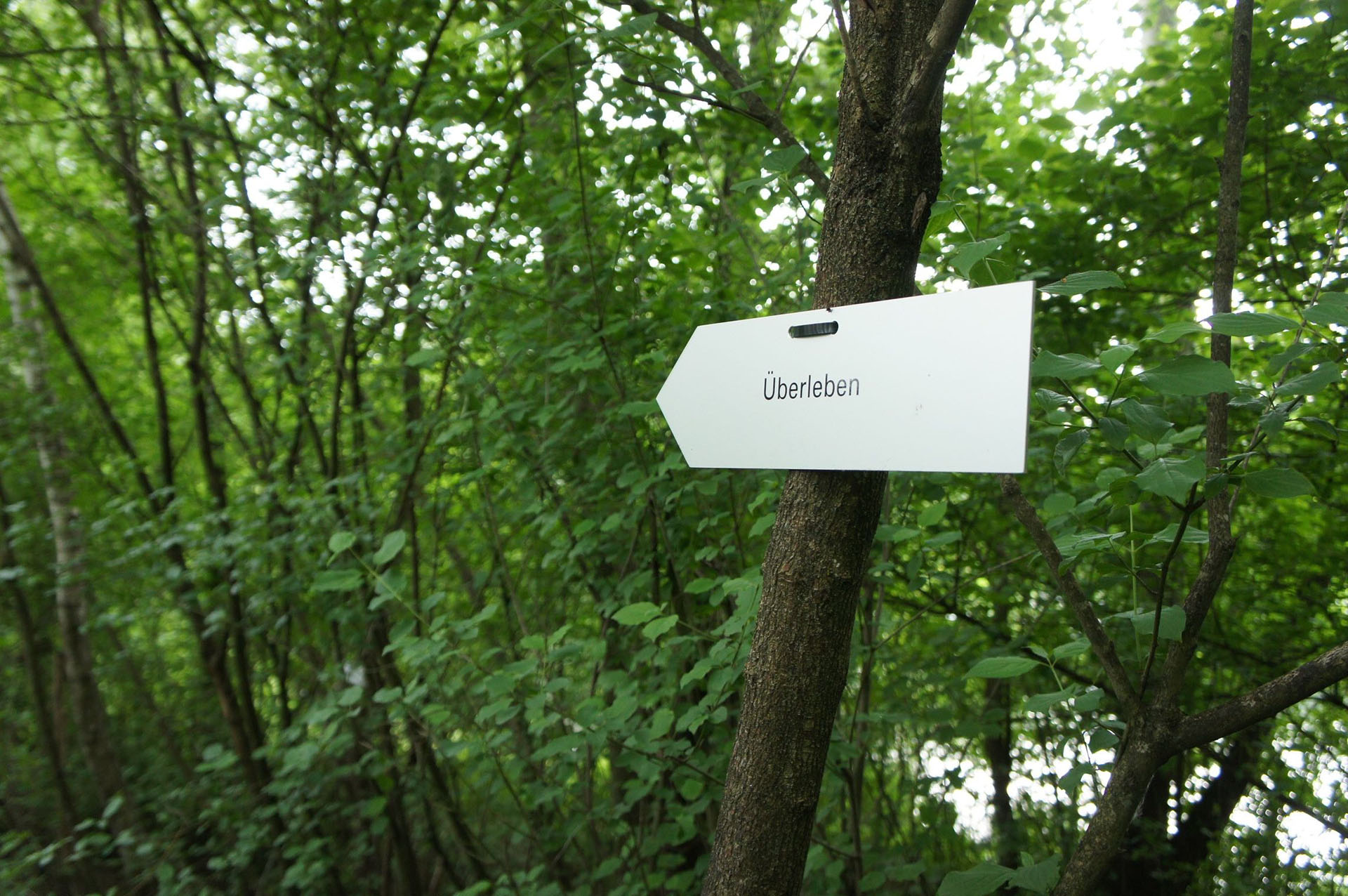 Installation by Margit-Bartl Frank at the pipe, May 2015, Photo: Margit Bartl-Frank
Installation by Margit-Bartl Frank at the pipe, May 2015, Photo: Margit Bartl-Frank

Damaged installation by Margit Bartl-Frank at the pipe, August 2015, Photo: Margit Bartl-Frank
17 Josef Hagen
Shot at the pipe. The Lustenau deserter Josef Hagen
Lustenau, May 31, 1944
On October 10, 1944, three Lustenau citizens are found guilty by the Feldkirch Regional Court of having “offered a soldier who had escaped from military service a helping hand and thereby facilitated the continuation of his escape.” The mother of the fugitive Josef Hagen, Regina Hagen, is sentenced to four months, Hermann Hofer, an uncle of the fugitive, and his acquaintance, Johann König, are sentenced to six and ten months in prison.
Josef Hagen had received home leave in May 1944 and did not want to return to the front after his brother was reported missing in action on May 30. His mother, with the help of Hermann Hofer, convinced someone whom the verdict described as a “shrewd smuggler” to help her son “and show him the best way to cross into Switzerland at the Rohr.”
The “Rohr”, which to this day carries a drainage canal across the Old Rhine, had been used as an escape route before the war began. In the meantime, the crossing on the pipe was blocked with a grid. What remained was the path through the pipe.
“Johann König met with the deserter Josef Hagen and was observed standing with the deserter about 50 meters from the pipe channel and showing him the pipe as an escape route. Josef Hagen was observed climbing into the water towards the pipe channel and disappearing there. The auxiliary customs operations assistant Willibald Hofer, who was the observer of these events, fired 9 shots into the canal opening because he suspected that Josef Hagen was using this canal as an escape route to Switzerland. He also observed Johann König standing on the embankment looking at the pipe channel, which was also his task after Johann König's concession to go near the border to see if the desertion had succeeded.”1
Josef Hagen had not been lucky. Badly wounded by the shots of the auxiliary customs officer, he reached Switzerland. But he died the same day in the hospital in Altstätten. The prison sentences of his relatives and the escape helper were increased even further after the verdict was overturned by the Higher Regional Court in Innsbruck. Johann König's imprisonment was extended to 15 months in the penitentiary. In fact, he sat in a concentration camp until the end of the war.
Links:
A Historical Cycle Route leads to 17 historical sites in Lustenau, from the beginnings of settlement to the present day, including the escape routes along the old Rhine.
https://www.lustenau.at/de/freizeit/kultur/historisches-archiv/historischer-radrundweg
[1] Quoted from: Hanno Platzgummer: “Josef Hagen (1919-1944). Tod auf der Flucht vor dem Tod“, in: Hanno Platzgummer, Karin Bitschnau, Werner Bundschuh (Ed.), „Ich kann einem Staat nicht dienen der schuldig ist …“ Vorarlberger vor den Gerichten der Wehrmacht, Dornbirn 2011, p. 59.
 Installation by Margit-Bartl Frank at the pipe, May 2015, Photo: Margit Bartl-Frank
Installation by Margit-Bartl Frank at the pipe, May 2015, Photo: Margit Bartl-Frank



